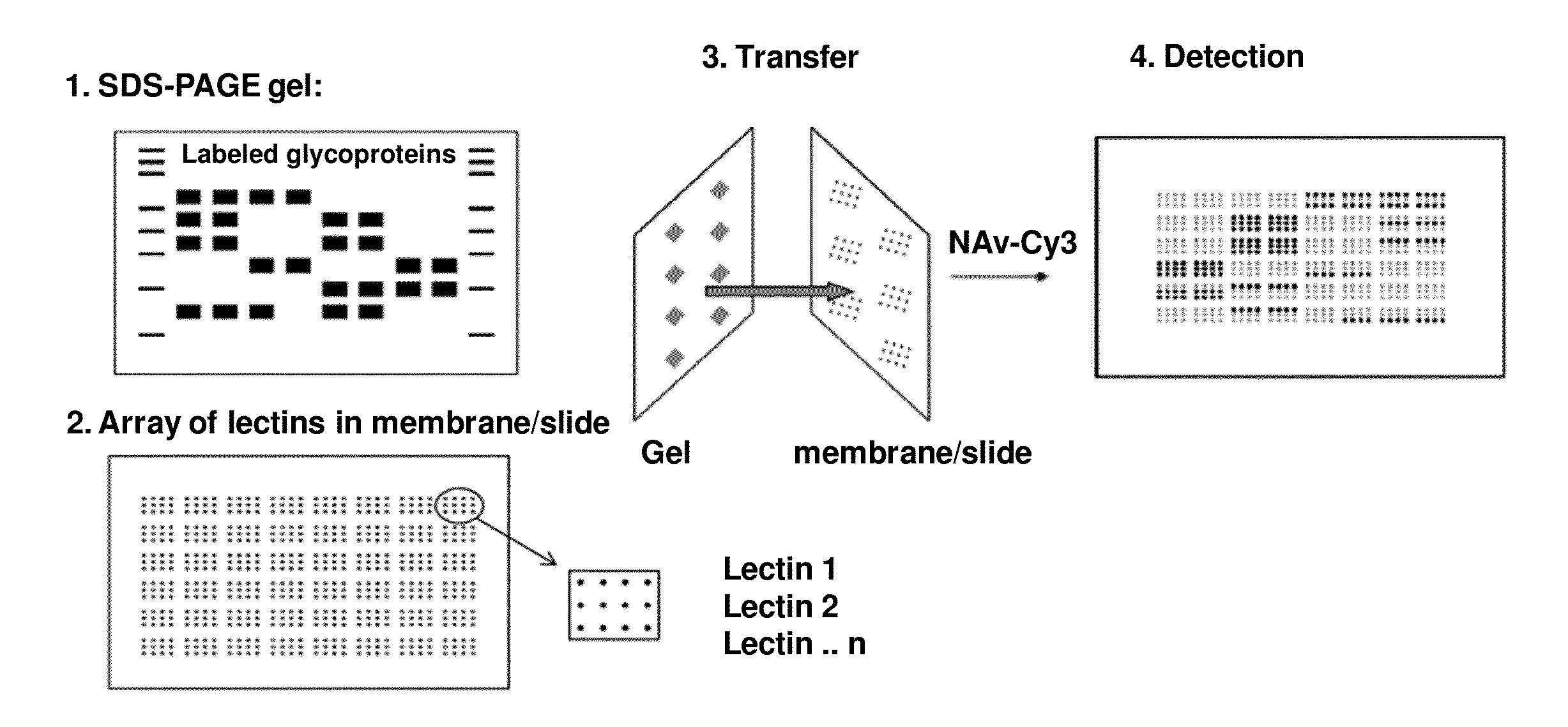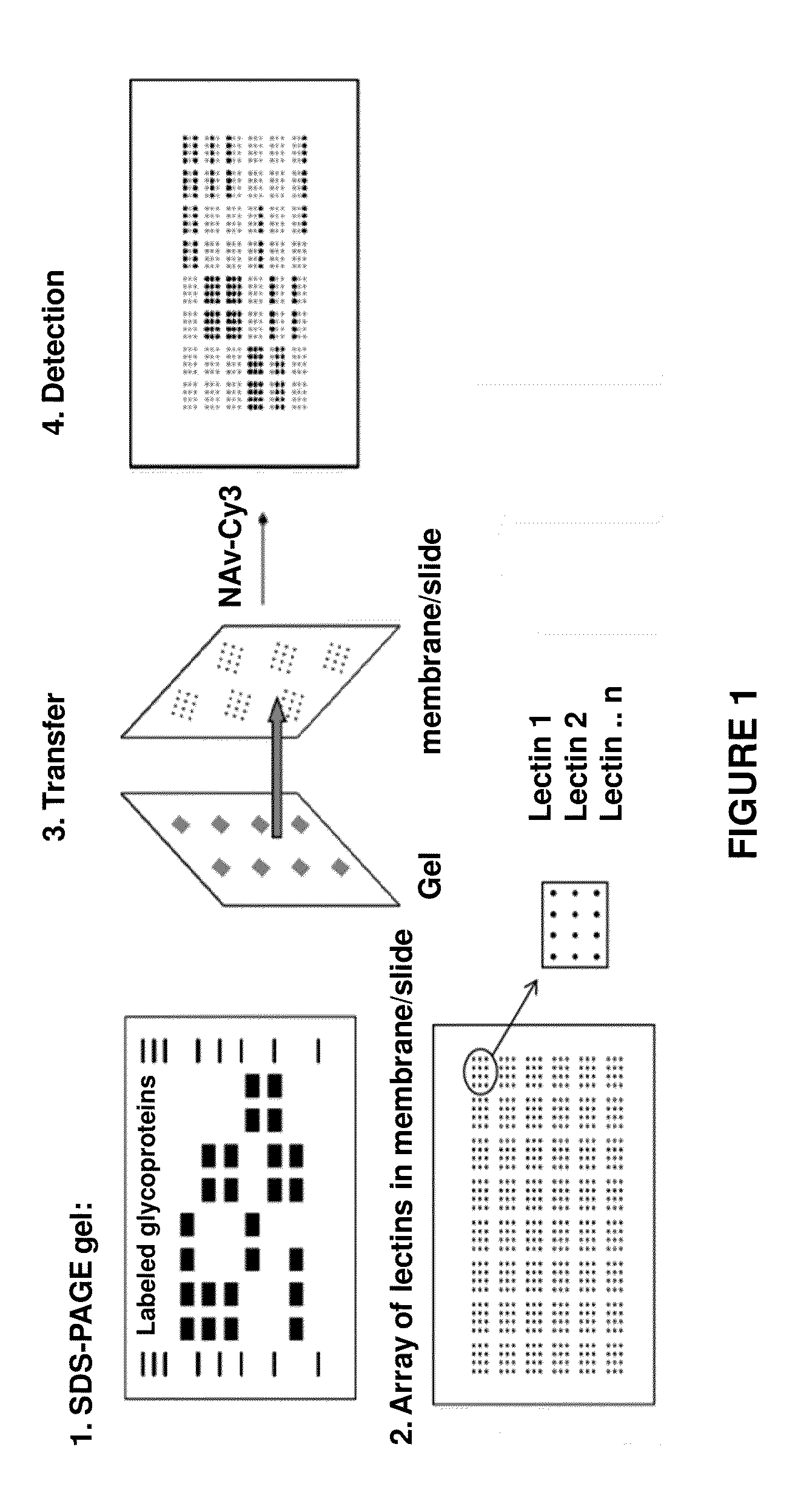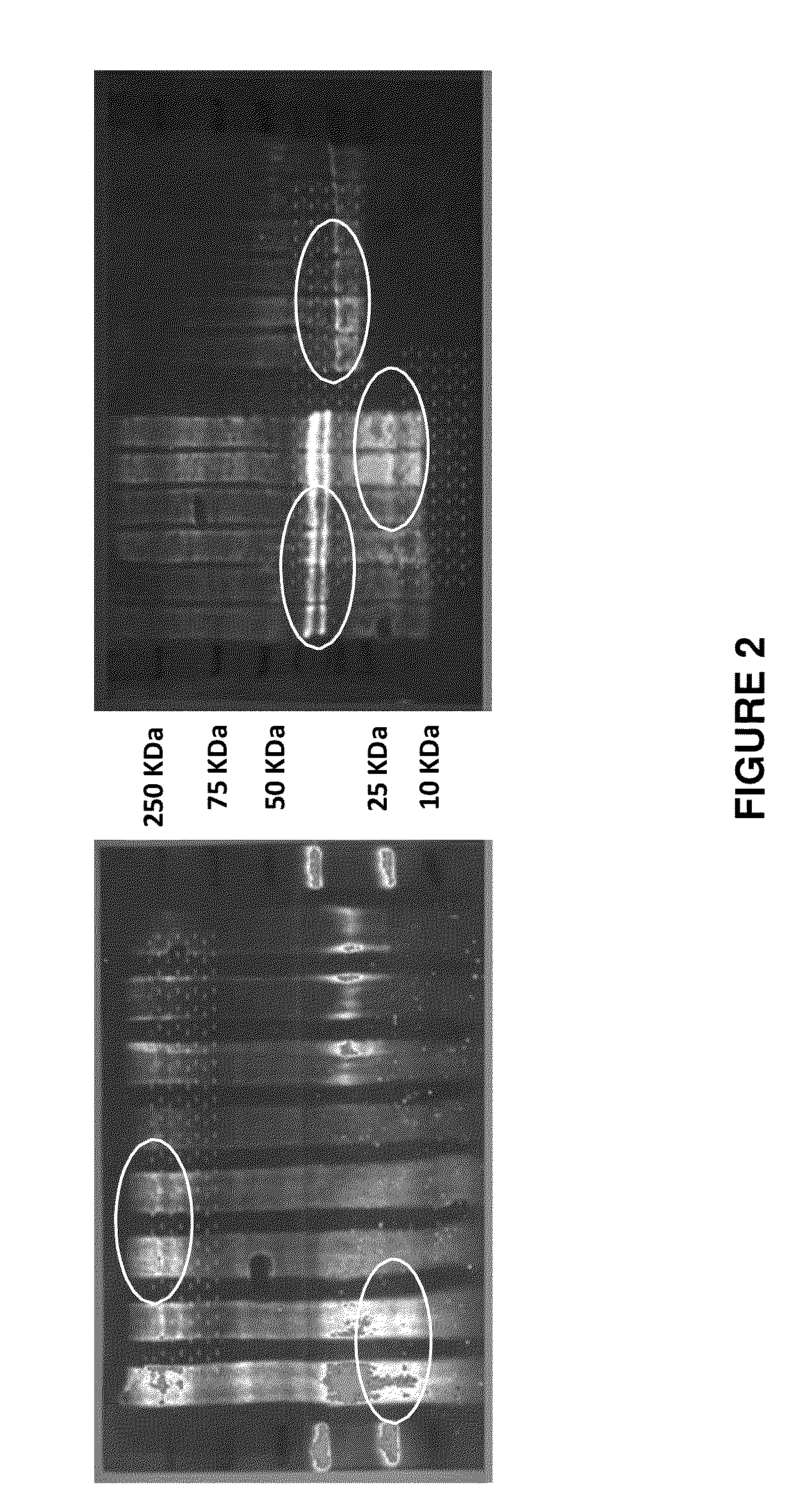Method for the characterization of intermolecular interactions
a technology of intermolecular interactions and methods, applied in the field of glycoproteins, can solve the problems of unsuitable for rapid and systematic evaluation of the glycosylation state of proteins, laborious methods of glycoprotein analysis based on mass spectrometry, immunotransfer and chromatography, and inability to analyze multiple lectins or multiple glycoproteins at the same time, and achieves the effect of facilitating the simultaneous analysis of several lectins or multiple glycoproteins, facilitating th
- Summary
- Abstract
- Description
- Claims
- Application Information
AI Technical Summary
Benefits of technology
Problems solved by technology
Method used
Image
Examples
example 1
[0245]The protein mixtures are biotinylated with a biotinylation kit according to standard procedures. After the biotinylation, the proteins are separated into one or two dimensions by means of SDS-PAGE according to their mass as usual. The proteins are then transferred to an especially prepared membrane which has been previously stamped with multiple copies of small arrays of lectin using a standard wet or semi-dry electrophoresis apparatus. The arrays of lectin cover the entire membrane in the form of a large array, not unlike a TV screen with 4 different colored pixels for each individual point. See FIG. 1.
[0246]During the transfer process, all the proteins in the gel are transferred to the membrane, maintaining their relative x,y positions as in a normal immunotransfer. However, the transfer membrane has been treated with a blocking agent after stamping the lectins to prevent the non-specific binding of proteins to the membrane. The glycosylated proteins are only bound according...
example 2
Materials and Methods
1. Microarray Fabrication
[0256]Lectins, Concanavalin A (ConA), Wheat germ agglutinin (WGA), Ricinus communis agglutinin (RCA), Erythrina cristagalli (ECA), Sambucus nigra lectin (SNA), Maackia amurensis lectin I (MAL-I), Aleuria aurantia lectin (AAL), Ulex europaeous agglutinin I (UEA-I), Pisum sativum agglutinin (PSA), Lens culinaris agglutinin (LCA), Galantus nivalis (GNA), Narcissus pseudonarcissus lectin (NPL), Griffonia (Bandeiraea) simplicifolia lectin II (BSL-II), Phaseolus vulgaris E+L (PHA), Jacalin (JAC), Wisteria floribunda lectin (WFL), Vicia villosa lectin (VVL), Peanut agglutinin (PNA), Lotus tetragonologus lectin (LTL) and Griffonia (Bandeiraea) simplicifolia lectin I (BSL-I) were purchased from Vector laboratories, Burlingame, USA and Sigma-Aldrich. Lectins were reconstituted in HEPES 50 mM, pH 8.5, 0.3 mM Ca2+, 0.08% NaN3 as 2.0-5.0 mg / mL solutions and stored at −20° C.
[0257]Lectin solutions, 0.4-0.5 mg / mL were prepared in print buffer (1.0 mM D...
PUM
 Login to View More
Login to View More Abstract
Description
Claims
Application Information
 Login to View More
Login to View More - R&D
- Intellectual Property
- Life Sciences
- Materials
- Tech Scout
- Unparalleled Data Quality
- Higher Quality Content
- 60% Fewer Hallucinations
Browse by: Latest US Patents, China's latest patents, Technical Efficacy Thesaurus, Application Domain, Technology Topic, Popular Technical Reports.
© 2025 PatSnap. All rights reserved.Legal|Privacy policy|Modern Slavery Act Transparency Statement|Sitemap|About US| Contact US: help@patsnap.com



